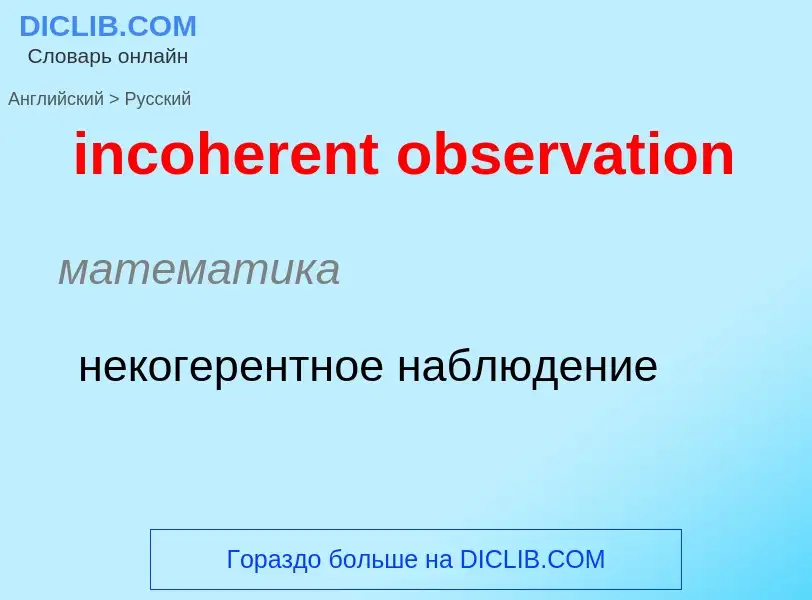Tradução e análise de palavras por inteligência artificial ChatGPT
Nesta página você pode obter uma análise detalhada de uma palavra ou frase, produzida usando a melhor tecnologia de inteligência artificial até o momento:
- como a palavra é usada
- frequência de uso
- é usado com mais frequência na fala oral ou escrita
- opções de tradução de palavras
- exemplos de uso (várias frases com tradução)
- etimologia
incoherent observation - tradução para russo
математика
некогерентное наблюдение
математика
беспорядочный разброс
Definição
Wikipédia
Incoherent scattering is a type of scattering phenomenon in physics. The term is most commonly used when referring to the scattering of an electromagnetic wave (usually light or radio frequency) by random fluctuations in a gas of particles (most often electrons).
The most well known practical application is known as incoherent scatter radar theory, a ground-based technique for studying the Earth's ionosphere first proposed by Professor William E. Gordon in 1958. A radar beam scattering off electrons in the ionospheric plasma creates an incoherent scatter return. When an electromagnetic wave is transmitted through the atmosphere, each of the electrons in the ionospheric plasma essentially acts as an antenna excited by the incoming wave, and the wave is re-radiated from the electron. Since the electrons are all moving at varying speeds as a result of ionospheric dynamics and random thermal motion, the reflection from each electron is also Doppler shifted. The receiver on the ground then receives a signal composed of the superposition of the re-radiated waves from all the electrons in the path of the incoming wave. Since the positively-charged ions also present in the ionosphere are orders of magnitude more massive, they are not as readily excited by the incoming electromagnetic wave in the way that the electrons are, so they do not re-radiate the signal. However, the electrons tend to remain close to the positively-charged ions. As a result, the distribution function of the ionospheric electrons is modified by the much slower and more massive positive ions — electron density fluctuations relate to ion temperature, mass distribution, and motion. The incoherent scatter signal allows measurement of electron density, ion temperature and electron temperatures, ion composition and plasma velocity.

